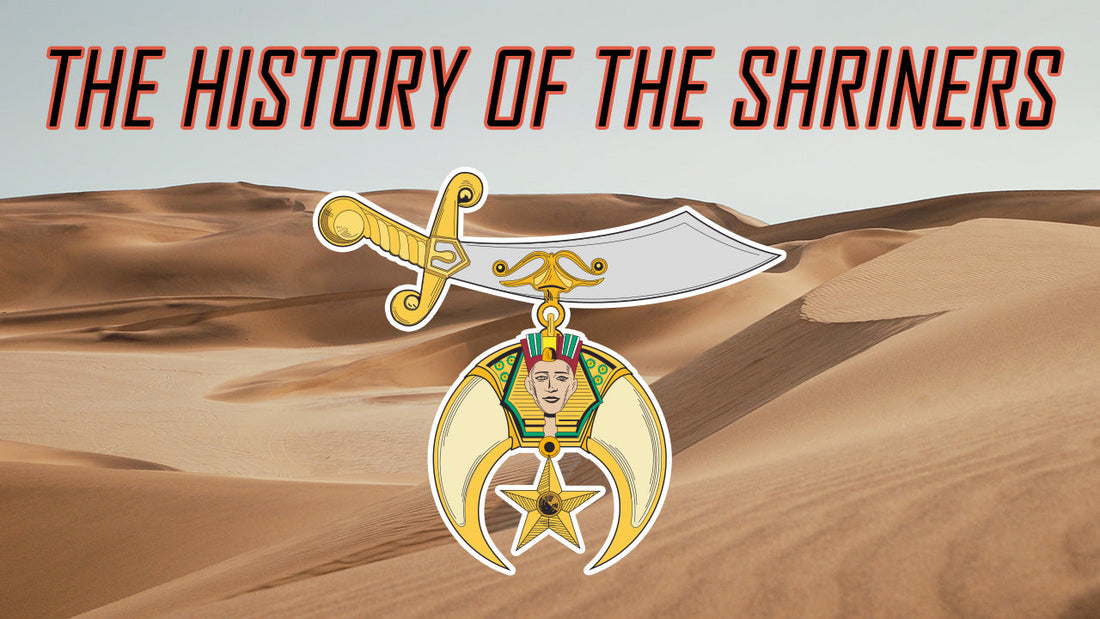
Shriners International: A History of Fellowship, Charity, and Brotherhood
Share
Shriners International: A History of Fellowship, Charity, and Brotherhood
Shriners International, a renowned fraternal organization, stands as a testament to the enduring values of fellowship, charity, and brotherhood. Established against the backdrop of the late 19th century, the Shriners have evolved from a small group of men bound by mutual interests into a global force for philanthropy and community service.
The roots of Shriners International trace back to the Masonic fraternity, an ancient and secretive organization founded on principles of morality, charity, and mutual support. Masonic lodges, where members convened for social interaction and shared ideals, provided a nurturing ground for the formation of Shriners. In 1870, a group of Masons gathered in New York City, paving the way for the establishment of the Ancient Arabic Order of the Nobles of the Mystic Shrine, commonly known as the Shriners.
The driving force behind the creation of the Shriners was Walter M. Fleming, a prominent physician, and William J. Florence, an accomplished actor. Inspired by their shared interest in Middle Eastern culture, Fleming and Florence fused elements of theatricality, mysticism, and camaraderie to create a distinct fraternal order within the Masonic fold. The duo envisioned a group that would emphasize fun, fellowship, and benevolence, setting it apart from the more traditional and solemn Masonic lodges.
Central to the Shriners' identity is their iconic fez, a red hat with a black tassel, inspired by the headgear worn in the Ottoman Empire. The fez symbolized the Shriners' connection to Middle Eastern themes while serving as a recognizable marker of their distinct identity. This unique symbol resonated with members and played a pivotal role in shaping the organization's image.
The early years of Shriners International were marked by a rapid spread of the order across North America. Establishing temples in various cities, the Shriners attracted men from diverse backgrounds and professions, united by their commitment to camaraderie and philanthropy. The adoption of a playful and light-hearted demeanor set the Shriners apart from traditional fraternal organizations, as they embraced elaborate parades, elaborate rituals, and charitable activities.
As the organization grew, so did its commitment to philanthropy. A defining moment came in 1920 when the Shriners established their first philanthropic endeavor, the Shriners Hospitals for Children. This initiative was grounded in the belief that children with medical needs deserved access to world-class healthcare, regardless of their families' financial circumstances. Over the years, the Shriners Hospitals for Children network expanded to encompass 22 locations across North America, offering specialized pediatric care in various medical fields, from orthopedics to burn treatment.
The Shriners' philanthropic endeavors extended beyond healthcare, encompassing diverse charitable projects. Their commitment to supporting children, families, and communities manifested in scholarships, disaster relief efforts, community outreach programs, and more. Through their strong emphasis on giving back, the Shriners forged a legacy of positive impact that has reverberated across generations.
Throughout the 20th century, Shriners International faced challenges and changes. As societal norms evolved, the organization grappled with the need to adapt while preserving its core values. Efforts to modernize rituals and embrace inclusivity were met with varying degrees of resistance, reflecting the tension between tradition and progress that many fraternal orders encountered during this period.
In recent decades, Shriners International has continued to evolve in response to changing times. The organization has embraced digital platforms to connect with members and the public, raising awareness about their charitable work and providing new avenues for engagement. Furthermore, Shriners International has focused on ensuring the sustainability of its philanthropic efforts by emphasizing fundraising, efficient management, and strategic partnerships.
In conclusion, Shriners International stands as a remarkable institution that emerged from the fusion of Masonic ideals, theatrical flair, and a commitment to humanitarian causes. With its distinctive fez, vibrant parades, and dedication to supporting children's health, the Shriners have left an indelible mark on the landscape of fraternal organizations. From its inception in the 1870s to its present-day global presence, Shriners International exemplifies the enduring power of fellowship, charity, and brotherhood in fostering positive change in society. As it navigates the challenges and opportunities of the 21st century, the Shriners continue to carry forward their legacy of making a meaningful difference in the lives of countless individuals and communities.
